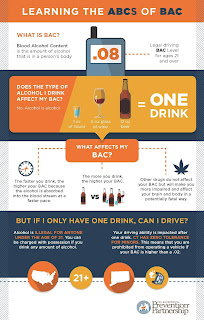- Governor’s Prevention Partnership Announces Jozzlynn Lewis Chosen as 1 of 15 Nationwide -
(HARTFORD,
CT) – June
10, 2016 – While many Connecticut students will be honored with end-of
-year school awards, Putnam High School Junior Jozzlynn Lewis has
earned a coveted spot on a national teen board. Each year, Students Against Destructive Decisions or SADD, provides an opportunity for select students to join an exciting
advocacy-training program called SADD SPEAKs. SADD state coordinator for Connecticut,
the Governor’s Prevention Partnership, recently announced Lewis’ appointment at
the Governor’s Residence Reception on Tuesday, June 7th in Hartford.
“Jozzlynn was one of only 15 young people from across the country who
was chosen. It is quite an honor!” said Jill Spineti, President & CEO, The
Governor’s Prevention Partnership (The Partnership). “This is also significant
for The Partnership because this is the first time in ten years that we have
had a youth from Connecticut involved in a national SADD initiative.”
Lewis addressed the invited CEOs, Commissioners, and other
high level officials at Tuesday’s event hosted by Governor Malloy and the
Partnership’s Board of Directors. The Partnership also
shared its new strategic plan to the attendees, who generously support the
non-profit organization. The plan is focused on The Partnership’s mission to
equip and connect community groups, business leaders and families to prevent
substance abuse, underage drinking and violence among youth.
“While underage drinking has dropped 8.9 percent, that's not good
enough,” states Spineti. “More than 50 percent of Connecticut's youth continue
to deal with issues of drug use, family alcoholism, bullying and child abuse.
We partner with SADD and exemplary students such as Jozzlynn to help children avoid
all substances to ensure a healthier future.”
Lewis, 17, underwent
a competitive selection process which focused on her experience, leadership
qualities, public speaking ability, and other criteria. She was recognized as a
dynamic student leader who has also been
involved in her local substance abuse prevention coalition, Putnam PRIDE, for
many years, along with her mother, Cheryl Lewis. Her interest in SADD stems
from seeing alcohol and substance use in her own school.
“Sometimes kids come to
class under the influence,” explains Lewis. “This has a negative influence
on all of the students, not just the ones who use. I became involved in
SADD in order to make a difference and do my part to make things better.”
Lewis’
commitment and dedication certainly impressed the judging panel. “Jozzlynn is
deserving of this high honor. Her deep desire to empower her peers and change
her community will serve her well, as she works to implement policy change at
the local, state, and national level,” said Dawn Teixeira, SADD president and
chief executive officer. “Motivated young people are a true catalyst for social
change.”
“I am so very proud of Jozzlynn and her dedication to SADD, as well as
her commitment to wanting to make Putnam High School and our community a safer
place to learn and live,” adds Lisa Mooney, School Social Worker and SADD
Advisor at Putnam High School.
SADD SPEAKs (Students for Policy, Education, Advocacy, &
Knowledge) is an initiative of SADD National, funded by State Farm that focuses
on addressing an impaired driving issue. The participants will have a
positive and lasting effect on public policy, demonstrating the power of
America’s young people to speak persuasively on critically important issues.
They will be trained in coalition building, public speaking and advocacy skills.
This year’s SADD
SPEAKs delegates will develop an advocacy plan to address an impaired driving
issue (distracted, drowsy, drugged or underage drinking and driving). The group
will then lead the national organization’s efforts on Capitol Hill and before
their own state and local governments, as well
as mobilize thousands of SADD students across the country.










